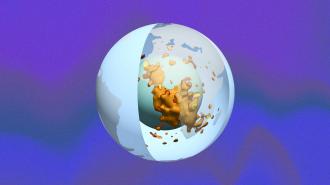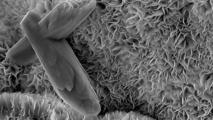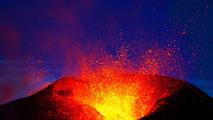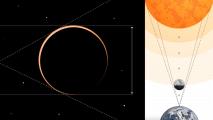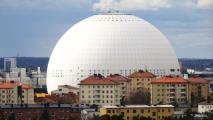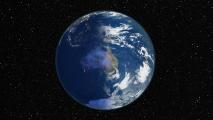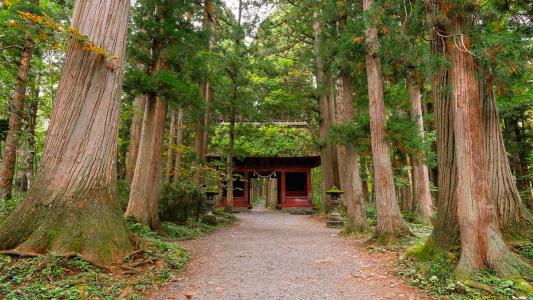In 1969, humans first walked on the Moon — and it was also in 1969 that we began to settle the question of the Moon’s origin. At a conference in Hawaii that year, scientists agreed on a theory that had begun with an observation from George Darwin, son of Charles, in 1898.
Darwin’s analysis of the Moon’s orbit suggested that the Earth and the Moon are slowly pulling apart, and that in the past, they must have been much closer — even part of the same whole. Seven decades later, in the year that Neil Armstrong and Buzz Aldrin would set foot on the Moon, scientists met for a lunar origins conference.
They agreed that the younger Darwin was probably correct that the Moon was largely made from material from Earth. But while Darwin thought the Moon had split off on its own, the scientists concluded that the cleaving of Moon and Earth was likely caused by a collision with a third celestial body.
Whatever planet had crashed into the Earth had helped bring the Moon into existence.
This mystery planet — a body the size of Mars — is the subject of the Giant Impact Hypothesis. The impact was thought to have occurred 4.5 billion years ago, soon after Earth itself formed and very early in the history of the solar system. Crashing into the nascent Earth at as much as 9.3 km/s (over 20,000 mph), hitting at just the precise angle, the impact could have knocked into space the material that would eventually coalesce into the Moon.
The hypothesis would explain why Moon rocks brought back by the Apollo astronauts were so similar in composition to Earth’s own crust. Whatever planet had crashed into the Earth had helped bring the Moon into existence. As such, the planet was named “Theia” — referring to the Titan of Greek mythology who was mother to Selene, the goddess of the Moon.
But there was a big problem with the hypothesis. “Nobody had ever found any evidence for Theia’s existence,” Dr. Qian Yuan, a geophysicist at the California Institute of Technology, tells Freethink.
Yuan’s idea was that the two blobs buried in Earth’s mantle might be remains of Theia.
It was Yuan who had a brainwave about what might remain of Theia. Sitting in a class at Arizona State University before he had received his PhD, Yuan was thinking about the two vast “blobs” buried in the Earth’s mantle that had been puzzling geologists. It is unclear exactly what these blobs — revealed by a kind of scanning called tomography — are made of, but they seem unlike the rest of the mantle.
There are many competing ideas about what these bizarre-looking formations might be — one hypothesis is that the blobs are the remnant of slabs of oceanic crust that were drawn below the Earth’s surface. But Yuan’s idea was that these slabs came from much further afield: the far reaches of the Solar System. These blobs, which form up to 3% of Earth’s mass, might be remains of Theia. “It’s a very big idea,” he says.
Yuan may not have been the first to spitball the idea that the blobs were the remains of Theia, but he was the first to have made a serious case for it, presenting the hypothesis at the Lunar and Planetary Science Conference in 2022. It remains, at this stage, just a hypothesis. Dr. Yuan and an interdisciplinary team are currently working on a paper that they hope will convince the geologists, seismologists, astronomers, and chemists who all have something to say about it.
The idea, he says, is “very hard to test” — but the collision, if it occurred, must have been very significant to the development of our world. The Earth might be a very different place had Theia not collided with it. Would life even exist at all?
“Giant impacts could be life-forming events, rather than life-destroying (as is widely believed).”
Damanveer S. Grewal
Any answer will be speculative, but the work of other scientists offers hints. In a paper published by Nature Astronomy 2019, three scientists from the University of Münster found evidence suggesting that much of Earth’s water — essential to life as we know it — arrived from the outer solar system, possibly in the same impact that created the Moon.
Gerrit Budde, one of the study’s three authors, is now an assistant professor at Brown University. The results of the paper, he said, were “almost certainly not the final answer, but at least an intriguing hypothesis, because it would mean that Theia came from the outer [solar system] and that we might owe the fact that we have so much water (and habitability) on Earth to a rather fortunate singular event.”
(Like much in this field, though, this remains a hypothesis, and other potential sources for Earth’s water include comets, asteroids, and volcanic emissions from within the Earth.)
Life requires more than just water; it also requires other ingredients, such as carbon and nitrogen. Carbon is the key element for organic chemistry. Nitrogen is essential to proteins. And a paper published in Science Advances, in 2019, argues that large quantities of both elements appear to have been delivered to Earth by “the impact of a Moon-sized planet.”
Damanveer S. Grewal, of the California Institute of Technology, was one of the paper’s authors. “If true,” he said, “delivery of volatiles” — a class of chemicals that includes carbon and nitrogen — “during the Moon-forming giant impact could set the stage for Earth’s habitability. In this case, giant impacts could be life-forming events, rather than life-destroying (as is widely believed).”
Theia might be one more crucial chapter, not yet fully written, in the ongoing story of life on Earth.
What about other effects that Theia might have had on the young Earth? Dr. Grewal didn’t think that the collision would have had a significant effect on Earth’s magnetic field, which protects us from cosmic radiation emitted by the Sun, but he thought it possible that without the additional mass added by Theia (less the mass knocked off to form the Moon), Earth’s gravity might be lower.
If we imagine that life emerged in this world of lower gravity, what would it look like? It’s pure speculation, but it’s interesting to consider. One possibility is that plants would have found it easier to raise water upwards, an effect that would allow them to grow taller than otherwise, with potential cascading effects on the evolution of life.
What is almost certain is that human life today would not exist without a freakish combination of circumstances and accidents stretching back billions of years. Theia might be one more crucial chapter, not yet fully written, in that ongoing story.
We’d love to hear from you! If you have a comment about this article or if you have a tip for a future Freethink story, please email us at [email protected].
